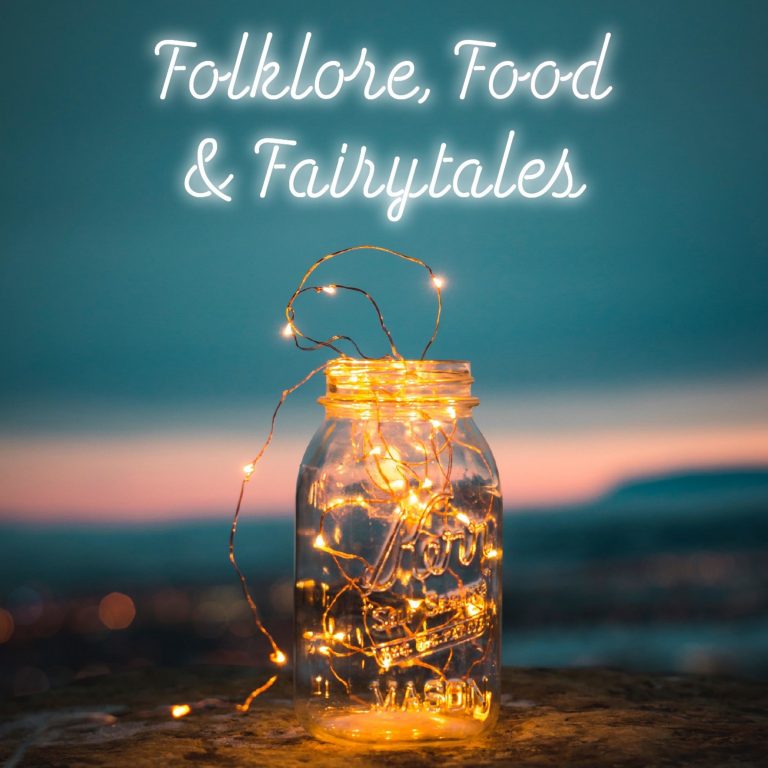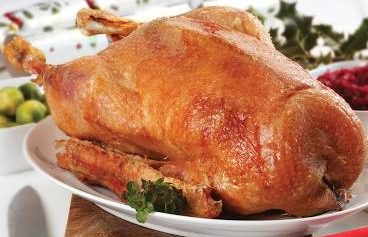In which we discover that there’s a difference between a rogue and a villain, people can be very careless with their animals and that you should never leave a stranger alone with your goose or your whiskey.
In which we discover that there’s a difference between a rogue and a villain, people can be very careless with their animals and that you should never leave a stranger alone with your goose or your whiskey.
Today’s story is The Cunning Thief from More Celtic Fairy Tales by Joseph Jacobs originally collected by Patrick Kennedy in the Fireside Stories of Ireland.
Today’s recipe is for Roast Goose with Mashed Potato, Prune & Apple Stuffing
Additional further reading links including the Forme of Cury, Sawse Madame, other historic cookbooks and the Herodotus story can be found at the bottom of this post.

A Charming Rogue
I felt that we were due a story about a loveable rogue after, what I’ve just realised is, a run of excellent clever women making their own happy endings with their skills and wit with just a little fate thrown in, these are stories after all.
The Cunning Thief is an Irish folktale that has many variations, most notably in Norway’s The Master Thief or Scotland’s The Tale of the Shifty Lad or The Widow’s Son (not the same tale as I told in a recent episode). There is an American folktale set in the Deep South that presumably travelled with Irish immigrants and changed. This Irish tale was collected by a Dublin bookseller by the name of Patrick Kennedy and then included in Joseph Jacob’s More Celtic Fairy Tales.
Different Country, Different Story
The Norwegian tale is very similar in content but not in tone. The Irish tale is told in a light hearted fashion and Jack is more hero than anti-hero. Jack likes trickery but is rarely cruel and is actually very generous. Much is made of the fact that he stole from those who deserved it (the robbers) or as a trick. The idea is planted that he only wanted to make his fortune with an end to marrying the squire’s daughter. He is a rogue rather than a villain, an important distinction. The story ends with his new parents in law being proud of him and his accomplishments
The Scottish tale is much grimmer (pardon the fairytale pun) than the Irish version. The widow’s son is definitely a villain, killing many people. He definitely fulfilled the legal definition of theft: the intention to permanently deprive unlike Jack and the Master Thief. Although he wins the princess, he still dies at the end, exactly as predicted by his mother. His death is unavoidable as the world of fairytales will not allow the villain to remain unpunished.
The American tale is almost a melding of the two tales. The American Jack steals in the way of the Scottish tale and intends keeping the profits of his nefarious doings. However, he’s the underdog and only steals and fools the wealthy landowner so his status of hero is kept intact. He is another rogue if not so loveable as our Irish Jack. The sheep killing and grave robbing are frankly difficult to overlook. This is very much in the tradition of American Jack Tales.
Herodotus You Say
Some scholars believe that all these stories come from a story included in the Histories of Herodotus, published in 430BCE. The robbers in this case are the sons of a builder who creates a treasure room for the Pharaoh. Unknown to the the Pharoah, he adds a secret entrance that he only reveals to his sons. There are enough similarities, including using the dead man’s arm to escape, that you can definitely make a case. This story is Egyptian but it’s suggested that this is a Greek story assimilated by the Egyptians and told back to Herodotus. The nations had much trading history as Egypt was food rich but cash poor and Ancient Greece was the opposite.
Everybody Needs Structure
Coming back to our story, it is not structured quite in the same way as many other tales as Jack actually has to complete four challenges to win his bride rather than the traditional three. He’s the youngest brother of three but we never hear of his brothers after they set out on their journey. This again is unusual. We’ll just have to assume that all went well with them. There is also a dearth of traditional helpers in the form of magical animals or women who have the answers. This is a local rural tale really, the story of a local boy made good. Jack doesn’t travel very far and his achievements are definitely his own. There are no kings or princesses in this tale.
A Dearth of Magic
The only mythical elements that are mentioned are fiery dragons but that is very much hyperbole. You could argue that the sleeping posset is slightly mystical but it was a common herbal remedy in a time before sleeping tablets. Sleeping draughts were often made from Chamomile, rosewater, lettuce seeds and white poppy seeds. You really only had to worry about the ones made from scarier plants like hemlock or mandrake. A posset was usually milk mixed with the alcohol of your choice with spices/herbs. In this instance it is likely just to be the herb/spice mixture as I’m sure even half asleep guards would have noticed milk in their whiskey.
Country Feast versus Royal Celebration
As best becomes the themes of the story, the foods in this tale are the celebratory foods of a rural community not those of a royal court. It is more likely to have been Autumn if you go by the foods described in the story. Goose is in season from September and beef was common in Autumn when cattle were surplus to requirements over winter. Beef was eaten more by the wealthier classes in Ireland, so the fact that Jack and his parents have it to serve to the squire is suggestive of his new status.
Sunday Bird
A goose was a Sunday bird rather than a weekday dish. It would have been cooked on a spit over the fire with the fat and juices being collected to make into a gravy for the meat. There is a recipe from the Forme of Curry in 1390 which suggests stuffing the bird with quinces, pears, grapes, garlic, sage, parsley, hyssop and savoury. The bird is then roasted and the juices collected. The goose is jointed, the juices and stuffing are added to a rich stock flavoured with powdered galangal (a type of ginger), salt and powdered sweet spices (cinnamon, mace and cloves) and simmered together. Wine is added if necessary to thin the sauce and it is then served with the roasted goose. I don’t know about you but I can totally taste this.
A Right Royal Recipe
These recipes were apparently from the household of Richard III so not your average household but it is an indication. Pears, quinces and apples and the above mentioned herbs were seasonal around the same time as goose so its not unlikely they would have been cooked with goose in slightly less noble households. Very similar recipes for Sauce Madame are still appearing 80 years later in books.
The Goose In History
Things start to change from the 16th century where apples and barberries start to replace the quinces and pears in the sauce and by 1623 in the Complete Housewife by G Markham all the herbs and spices have dwindled to just a little cinnamon and sugar. There is the suggestion also that onion could be added and that the stuffing could consist of oatmeal and shredded onions which will be let down after cooking with verjuice and fresh herbs to make a sauce. Thats a fairly big change in 230 years.
It all gets slightly sadder as time goes by and in the Complete Housewife by E Smith in 1773 the goose just has a sage and onion stuffing served with a dish of apple sauce and a gravy made by mixing the cooked stuffing with red wine. How far the mighty goose has fallen. Things do slightly improve by 1860 where Eliza acton suggests a similar treatment to the above but also considers adding fruit in the form of apple back to the stuffing. She also suggests stuffing the goose with mashed potato which obviously wasn’t an option in 1390.
New Look Goose
Potato stuffing in goose actually is delicious, even if it doesn’t compare to the majesty of the 1390 recipe. Which is lucky as today’s recipe is actually for that very dish. I’ve only ever cooked goose once and it was fantastic but a lot of work. All I can suggest is that if you attempt this recipe, learn from my experience and please do it in stages and don’t under any circumstances cook it on New Year’s Day with monumental hangover. New Year’s Day is obviously fine, if you don’t imbibe to excess the night before.
Roast Goose with Apple, Potato & Prune Stuffing with Gravy
6
servings1
hour3
hoursThis recipe was inspired by a potato stuffed goose recipe I saw by Nigella Lawson in Feast but having tried Himmel und Erde and loved the potato and apple combination as well as being addicted to fruit and meat combination this was the result.
Ingredients
- Goose
1 goose, oven ready around 4.5kg with giblets (this is important as you need them for stock)
- Stuffing
175g prunes
250ml strong black tea
25g butter
4 onions, chopped roughly
450g cooking apples, peeled and chopped
1 tablespoon fresh sage, chopped
900g floury potatoes (like Maris Piper)cut in chunks for boiling
- Gravy
4 rashers streaky bacon, chopped
25g goose fat
Goose giblets and neck
2 sticks of celery, chopped
1 onion, peeled and chopped
1 carrot, peeled and chopped
2 tablespoons brandy
150ml Marsala
300ml strong cjicken stock
1 tablespoon redcurrant jelly/lingonberry jelly
1 heaped tsp arrowroot
Directions
- Stuffing
- Cover the prunes in hot tea and leave to soak overnight or a minimum of 6 hours
- Melt the butter in a heavy saucepan, add the onions, cover and sweat on a gentle heat for about 5 minutes. Tip in the apples, sage and a couple of tablespoons of water and cook, covered, until the apples are soft and fluffy – about 10 minutes.
- Boil the potatoes for about 20 minutes until tender.
- Drain, then mash and add to the fruit and onion mixture with the soaked prunes and seasoning.
- Allow to get quite cold before stuffing the goose. You can do this the day before and keep in the fridge overnight but allow the mixture some time out of the fridge to come to room temperature before stuffing the goose.
- Goose
- Preheat the oven to 220 degrees C
- Rub salt into the outside of the goose and put a grinding of salt and pepper into the cavity
- Stuff the goose’s cavity with the potato & fruit mixture.
- Put the goose onto a wire rack over the largest roasting tin you have and then put in the oven
- Roast for 30 mins and then turn the temperature down to 180 degrees c and cook for an additional 2.5 hours.
- Don’t baste the goose as you want the fat to drain out into the tray. You will need to pour out the fat as the goose is cooking as too much fat in the tray could cause an accident. Check maybe once an hour. Don’t throw away the fat as it is great for cooking potatoes and will last for some time in the fridge.
- Check that the juices run clear before removing the goose from the oven.
- Allow the goose to rest for 15-20 minutes before serving with the potato stuffing
- Gravy
- You can either do this the day before or whilst the goose is cooking:
- Fry the bacon in goose fat in a heavy bottomed pan, add the giblets and neck bone and cook until well bronzed
- Add the vegetables and cook until brown
- Pour off any obvious fat and add the brandy and marsala. Bring to the boil and reduce until syrupy
- Pour in the chicken stock and fruit jelly and simmer for 30 minutes
- Strain through a sieve and remove any surface fat. If its easier just strain and then cool and put in fridge overnight at this stage. Then remove fat the next day.
- If you have refrigerated the gravy, bring to a simmer and add the arrowroot mixed with a little water. If the gravy is still warm, add the arrowroot and bring to a simmer. Cook gently until the gravy clears and thickens slightly. Be careful not to boil the gravy once the arrowroot has been added.
Further Reading
Herodotus, “The Tale of the Clever Thief”
Herodotus, with an English translation by A. D. Godley. Cambridge. Harvard University Press. 1920.
https://coquinaria.nl/en/medieval-goose/
The Forme of Cury
The English Housewife – G Mareham 1631 . p110
Complete Housewife & Accomplished Gentlewoman’s Companion E Smith 18th edition 1773
More Celtic Fairy Tales – Joseph Jacobs
Featured Image: – Photo by Johannes Plenio on Unsplash


